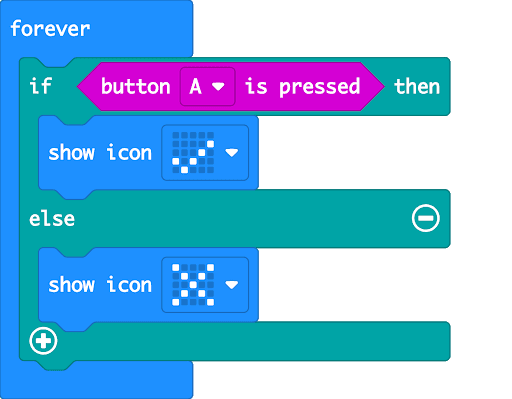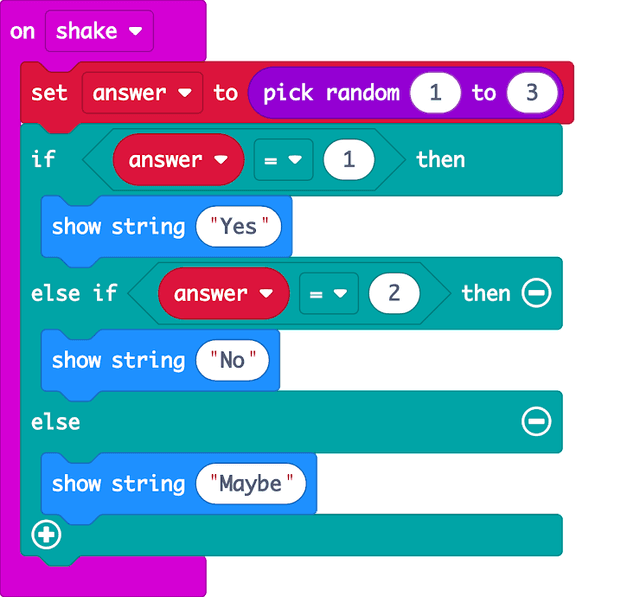Lesson 2 of 6
These resources were made for remote use during the pandemic, not classroom teaching.
Switch to our new teaching resources now - designed by teachers and leading subject experts, and tested in classrooms.
Lesson details
Key learning points
- In this lesson, we will explore how 'if... then... else...' statements are used to direct the flow of a program. We will then use this learning to create a fortune teller project to run on a micro:bit.
Licence
This content is made available by Oak National Academy Limited and its partners and licensed under Oak’s terms & conditions (Collection 1), except where otherwise stated.
3 Questions
Q1.What do you use the emulator for?
What do you use the emulator for?
To create the code for your program
To download your program on to a micro:bit
Q2.When do you flash a program?
When do you flash a program?
When you are adding the blocks to the coding area
When you run the program on the device
Q3.Which input devices have been introduced in this lesson? (tick 2)
Which input devices have been introduced in this lesson? (tick 2)
The compass
The light sensor
3 Questions
Q1.Using the flow diagram below, which object has not got an engine, but can fly?
Using the flow diagram below, which object has not got an engine, but can fly?

Aeroplane
Bicycle
Motorbike
Q2.What would be displayed on the LEDs if button A is pressed?
What would be displayed on the LEDs if button A is pressed?

A cross
A tick followed by a cross
Q3.What text would be displayed if number 3 was generated?
What text would be displayed if number 3 was generated?

No
Yes

